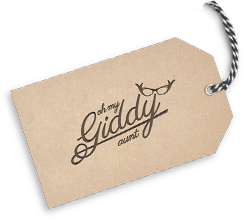Tooth Fairy - What's the Story?
Categories: Giddy Tales, Meanings & Symbols, Stories in Silver and Gold16 May 2017

The Story of the Tooth Fairy
Does anything top the anticipation of a visit from the Tooth Fairy? In Australia the Tooth Fairy is well established but it may surprise you to know she is not the only one with the job of collecting teeth.
In Spain and France a little mouse collects lost teeth using a method
 similar to that of the Tooth Fairy. A child places the lost tooth under a pillow or in a glass of water by the bed and the mouse visits in the middle of the night to take the tooth and leave a gift in its place. The gift may be money or something else, but whatever the gift, in the morning there is sure to be a toothless smile and a little more magic in the world!
similar to that of the Tooth Fairy. A child places the lost tooth under a pillow or in a glass of water by the bed and the mouse visits in the middle of the night to take the tooth and leave a gift in its place. The gift may be money or something else, but whatever the gift, in the morning there is sure to be a toothless smile and a little more magic in the world!

Traditions of giving lost teeth to a mouse or animal are ancient. "Lost Tooth"' rituals around the world also involve burying, hiding, swallowing or burning the tooth. In some cultures the tooth is thrown to the sun, over the roof or buried under the floor boards.
The Tooth Fairy would like you to know that compared to these ancient rituals she is a youngster, probably only a couple of hundred years old, even though she doesn't look a day over 99! Both the mouse and the fairy are combined in an 18th century French tooth mouse story that tells the tale of a fairy who changes into a mouse to hide under an evil king's pillow and teach him a lesson by knocking his teeth out.
The Tooth Fairy we know and love, good, kind, devoted to her profession, appeared in the early 1900s; exchanging gifts or money for lost baby teeth when they were put in a special spot under a pillow, in a glass of water, in a little box or special spot.

The winged tooth-collector grew in popularity when she starred in her own three act play for children The Tooth Fairy written by Esther Watkins Arnold (1927). Lee Rogow's story The Tooth Fairy appeared in 1949 and is possibly the first children's story written about the tooth fairy.
Since then Ms T. Fairy has become a household name and helps parents bring home the messages of dental hygiene. Most importantly, the Tooth Fairy also eases children (and parents) through the exciting and sometimes emotional process of "growing up" represented by the loss of baby teeth and the getting of big teeth.
 While the last baby tooth isn't usually lost until the tweenage years, parents and children are usually both happy to acknowledge the Tooth Fairy's important role until the process is complete. Precious memories of the Tooth Fairy are often rekindled when children have grown all the way up and continue the magic with their own children.
While the last baby tooth isn't usually lost until the tweenage years, parents and children are usually both happy to acknowledge the Tooth Fairy's important role until the process is complete. Precious memories of the Tooth Fairy are often rekindled when children have grown all the way up and continue the magic with their own children.If you have a family tradition, we'd love to hear it in the comments below.
...and just by the by, your Giddy Aunt would also like it noted that when the Tooth Fairy says "Floss Daily" she is not referring to the fairy kind of floss!



